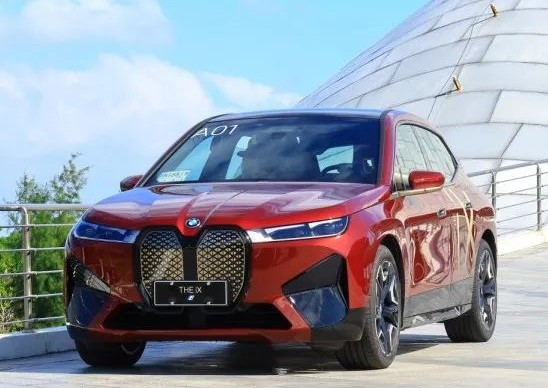*This article is reproduced from the autocarweekly WeChat official account.
Author: Ao Ao Hu
“XX (model) is first and foremost a XX (brand), and only secondly an electric vehicle.” – Almost every traditional luxury brand’s electric vehicle marketing material has this sentence ranked in the first few lines.
There’s no need to explain what iX looks like. When we drove out of the parking lot in a fleet of BMW iX, it was difficult not to be captivated by its unprecedented large nostrils. The design of the iX comes from Chinese designer Li Tien-yuan, who used to work at BMW, and just a few months ago, he appeared in the founding team photo of Xiaomi’s automotive business unit.
If you take a closer look, you will see that the iX has more special features than just its nostrils. It is a large SUV with a length similar to the X5, but from any angle, it completely abandons the “classic BMW” look. If you have to find a close relative in the BMW family, the easiest comparison would be to the BMW i3, a little guy from the early days of the BMW i series.
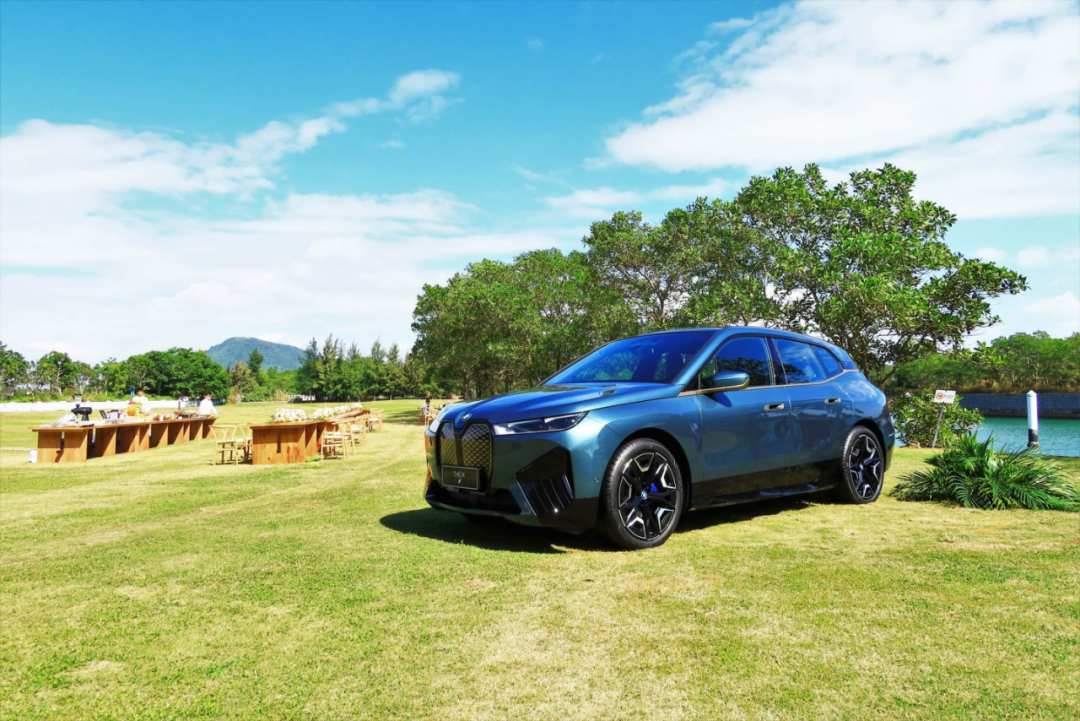
This comparison is not unfounded. BMW broke new ground on the i3 urban small car by using a specially customized carbon fiber composite body, which is still the cheapest “full carbon” model on the market. After the first round of experimentation with the i3 and i8, BMW has not had any new ideas for purely electric platforms for several years, and the iX3 and i4 are both based on the oil-electric hybrid CLAR platform-until today’s BMW iX (chassis code i20).
And a purely electric platform means that the iX will no longer have a “universal platform” to use as an excuse. All of its performance will be recorded as the true strength of “BMW electric vehicles”.
Coincidentally, the latest issue of the January 2022 Hong Kong edition of “TopGear” magazine gave the iX the certified title of “i3 successor”.

Boldness and Unconventionality
Of course, what we mean by “successor” here is not the usual product-level vertical replacement, but a spiritual inheritance at the technical level.
 From the i3 to the iX, you could say that BMW has leveraged the accumulation of experience and lessons from the i3 to create a large pure electric SUV with X5-like proportions. As a comparison, the i3 is similar to the Audi A2, which was introduced in 1997 with an all-aluminum body, costing a lot but not well received. However, it paved the way for the more widespread application of Audi’s ASF all-aluminum frame in later years.
From the i3 to the iX, you could say that BMW has leveraged the accumulation of experience and lessons from the i3 to create a large pure electric SUV with X5-like proportions. As a comparison, the i3 is similar to the Audi A2, which was introduced in 1997 with an all-aluminum body, costing a lot but not well received. However, it paved the way for the more widespread application of Audi’s ASF all-aluminum frame in later years.
Let’s put aside the difficult comparisons and talk about what we can see. BMW has given the iX a considerable degree of freedom, shortening the traditionally long dash-to-axle (the distance between the front axle center and the front door pillar) of the longitudinally-mounted luxury fuel vehicles, such as the X5, and maximizing the 3-meter-long wheelbase for the rear passenger cabin.
Once you open the door, the “unusualness” becomes even more apparent. The wide and large central armrest area in traditional luxury cars is only present in the back half of the iX. The armrest is still wide, and the iDrive control area is within easy reach, but it no longer connects to the center console in the front and instead leaves a gap towards the floor, similar to the i3 from years ago.
The reason, of course, is that the central tunnel that accommodates the transmission shaft in a gasoline car has disappeared. On the one hand, it is easier for the driver to move to the front passenger seat, a “reverse advantage” that normally only exists in several thousand dollar vans, is now available in higher-end vehicles. On the other hand, when the seats are full, we no longer need to twist and turn to throw our backpacks to the back seat.
However, this layout also places high demands on interior design – if not done properly, it could end up looking like a minivan. It’s important to note that the large center armrest, which was originally caused by physical limitations, has now become an important representation of luxury car body values. Therefore, although there are already quite a few luxury electric platforms, there aren’t many that dare to play like this.
The iX’s approach is to use a macro-level simplicity with micro-level elegance, creating a more modern and sophisticated sense of luxury.
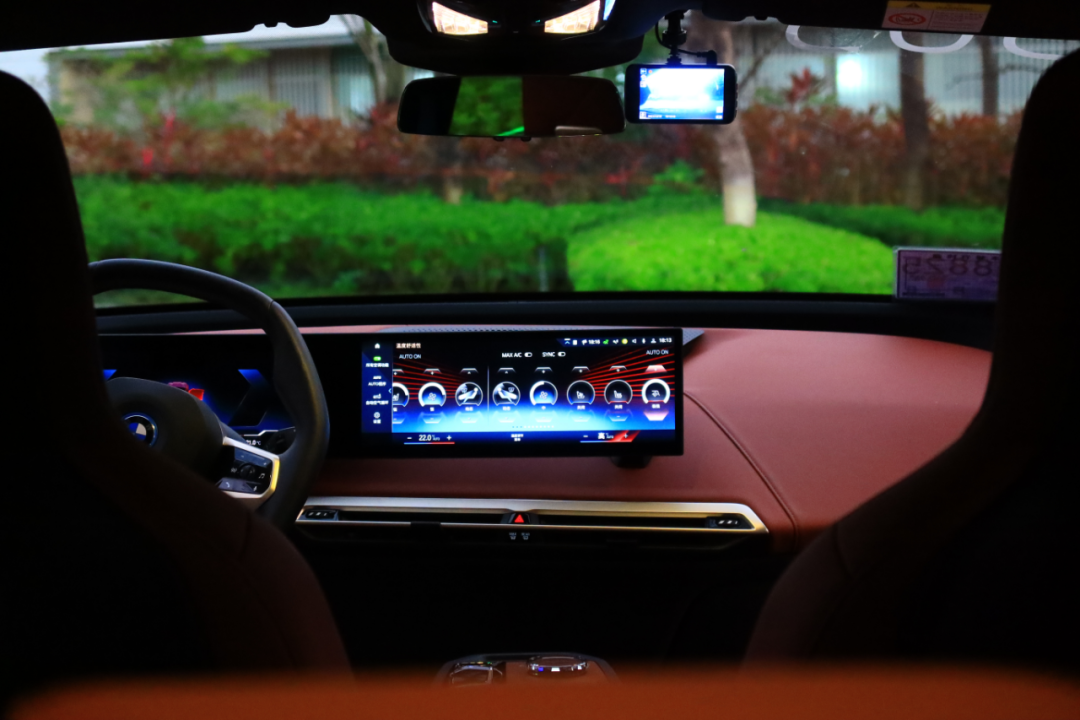
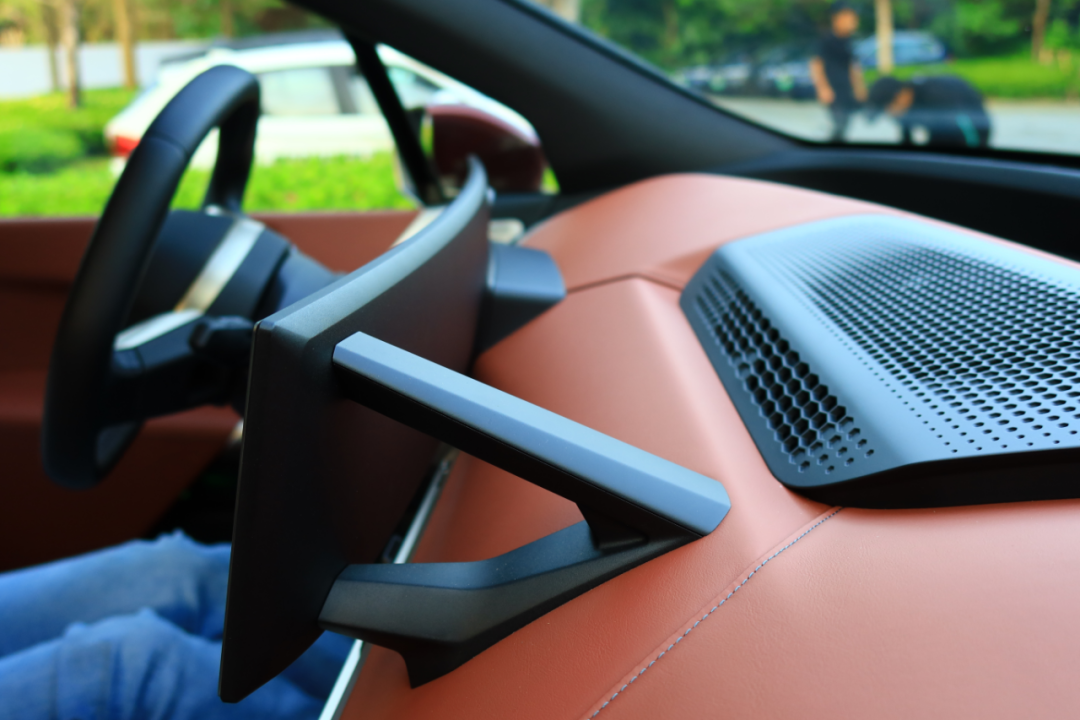 # One-piece dual screens, now presented as a floating curve with hidden brackets, the curvature may not be astonishing, but it allows the central console screen to tilt 6 degrees towards the driver, reproducing BMW’s “Driver-centric” tilted central console design in the digital age. The entire front central console, except for the apparent touch wood veneer, is wrapped in a large piece of olive leaf tanned leather.
# One-piece dual screens, now presented as a floating curve with hidden brackets, the curvature may not be astonishing, but it allows the central console screen to tilt 6 degrees towards the driver, reproducing BMW’s “Driver-centric” tilted central console design in the digital age. The entire front central console, except for the apparent touch wood veneer, is wrapped in a large piece of olive leaf tanned leather.
Gorgeousness is all in the details, the iDrive central knob is now made of crystal with a translucent texture, and physical pressure buttons are hidden beneath the seemingly touchscreen wooden veneer below. The seat adjustment controls have been moved to the door panel, also emanating a sparkling crystal glass texture.
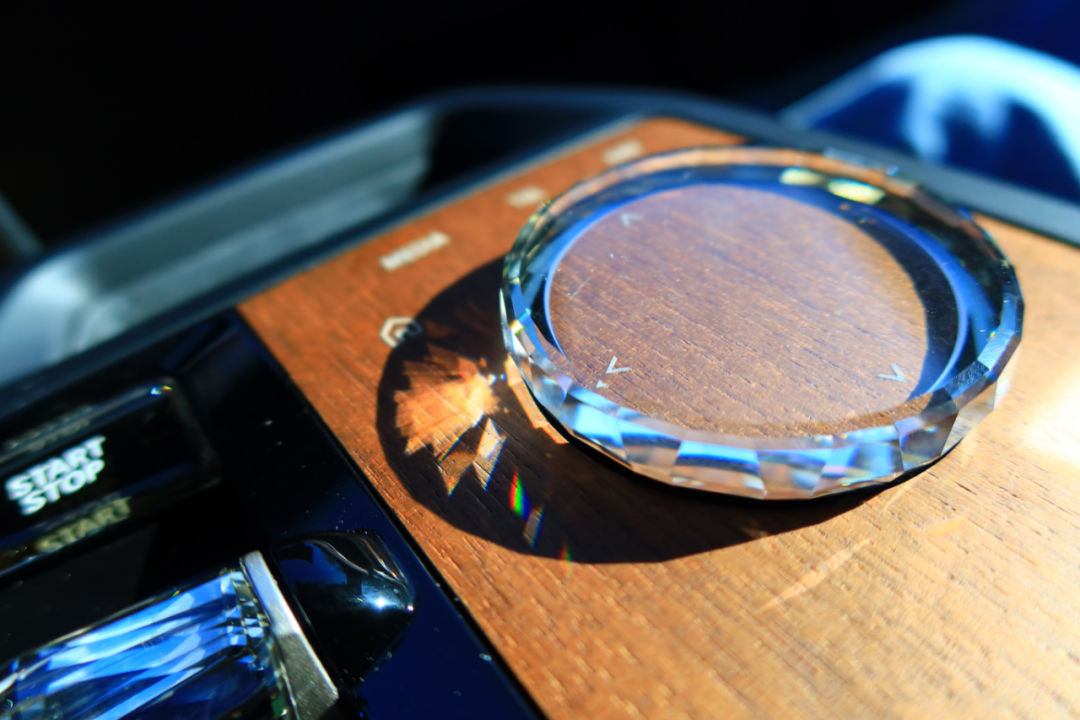
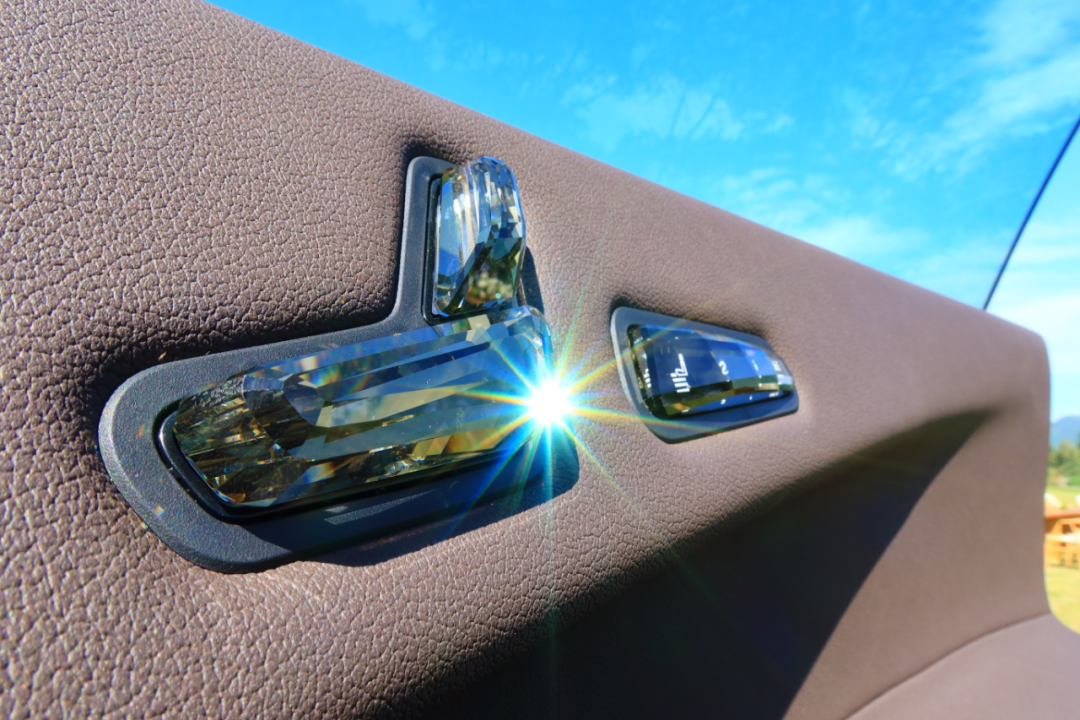
The persistence of Bavaria
To truly “move” it takes a bit of time to get used to the hexagonal-shaped distinctive steering wheel. The spaciousness brought by the light interior design is somewhat fresh at this price point. BMW has fully endowed the iX with the flexibility advantage of an electric vehicle, which has been demonstrated in the i3, but it takes some courage to do so at the iX price point.
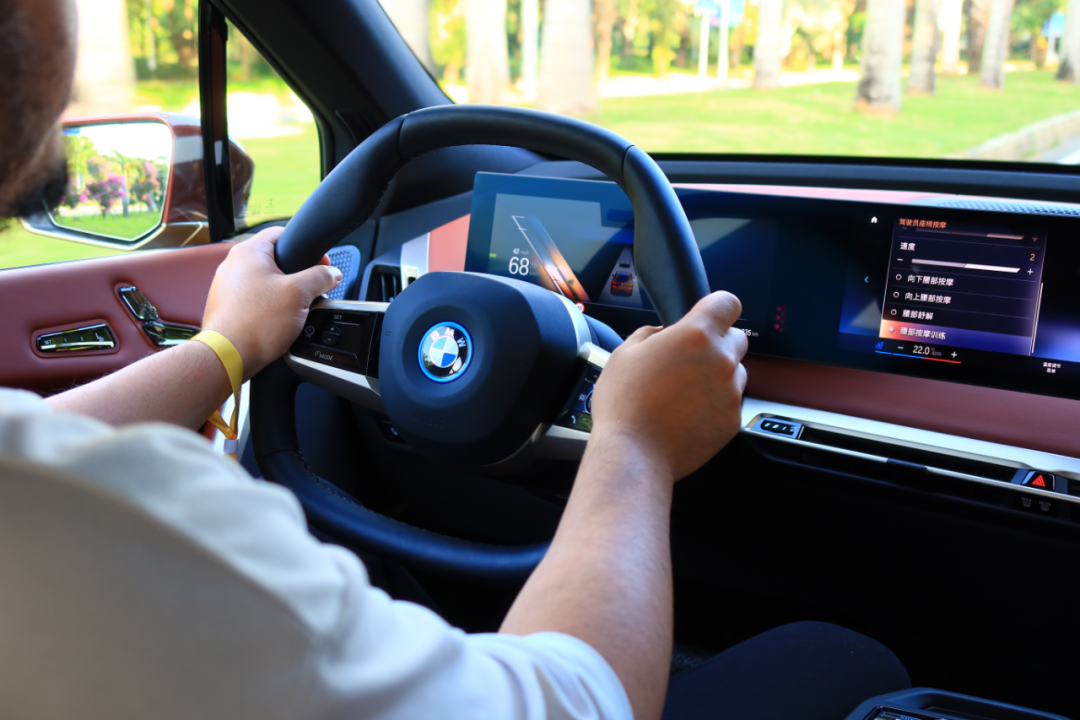
As for the iX’s chassis hardware configuration, it’s pretty much loaded at this price point: a basic suspension structure of front double-wishbone and rear five-link, front and rear air springs, 3.2° rear-wheel steering system and 17-inch large brake discs.
The dual electric motors with a total of 523 horsepower can accelerate the iX xDrive50 weighing over 2.5 tons to 100 km/h in 4.6 seconds. It is said that the M Performance version of iX M60 will come soon. It’s hard to imagine what could be the unsatisfied demand with such power.
If powerful performance is just a basic operation for high-end electric vehicles today, then BMW’s driving performance for the iX is the foundation of “BMW electric vehicles.” The iX has a lightweight steering feel in the central position, but with significant feedback at both ends. The difference between sport mode and standard mode is not noticeable, nor is there a significant increase in gain at angles like in the iX3, but you can feel a deliberate taste that is more high-end than the iX3 while avoiding being completely insipid.
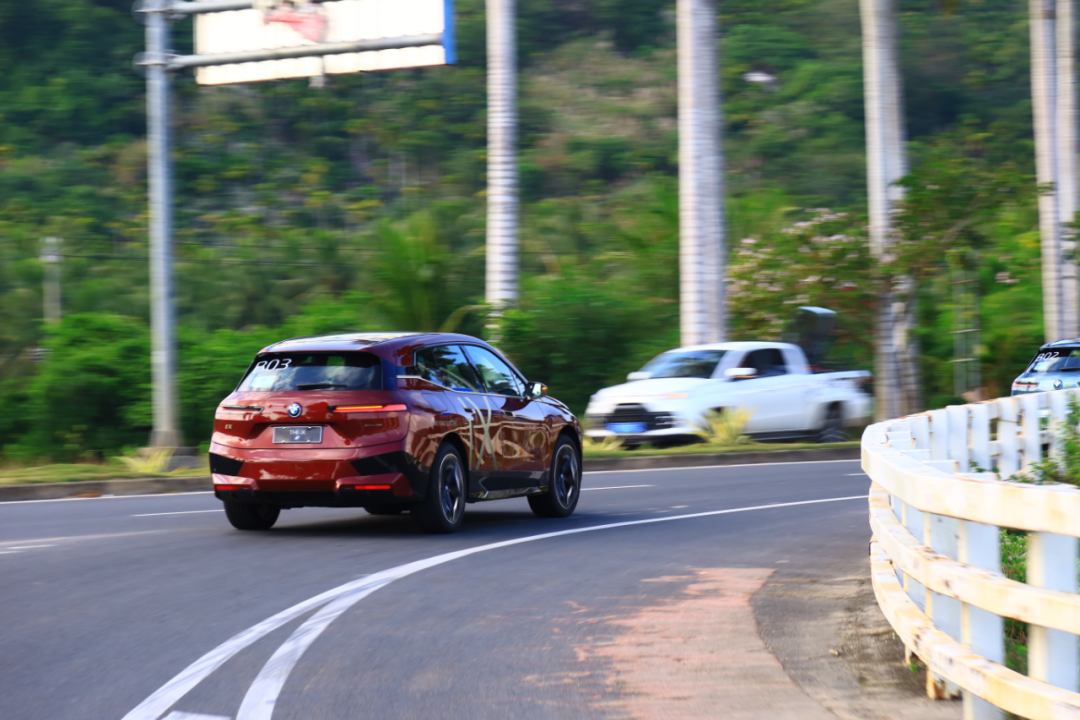 Do not be fooled by the harmless-looking dual directional steering wheel, nor be disappointed by the still relatively light sport mode steering feel. Just turn a wide corner, and its underlying professional nature of “don’t touch me” will be reflected in the linearly increasing feedback from the large turning angle.
Do not be fooled by the harmless-looking dual directional steering wheel, nor be disappointed by the still relatively light sport mode steering feel. Just turn a wide corner, and its underlying professional nature of “don’t touch me” will be reflected in the linearly increasing feedback from the large turning angle.
The iX currently comes with a 111.5 kWh battery pack, providing a range of 630 km under WLTP standards and 665 km under CLTP standards. In hot weather conditions in Sanya with highway driving, the energy consumption is around 19.7 kWh/100 km, which roughly translates to a range of over 500 km.
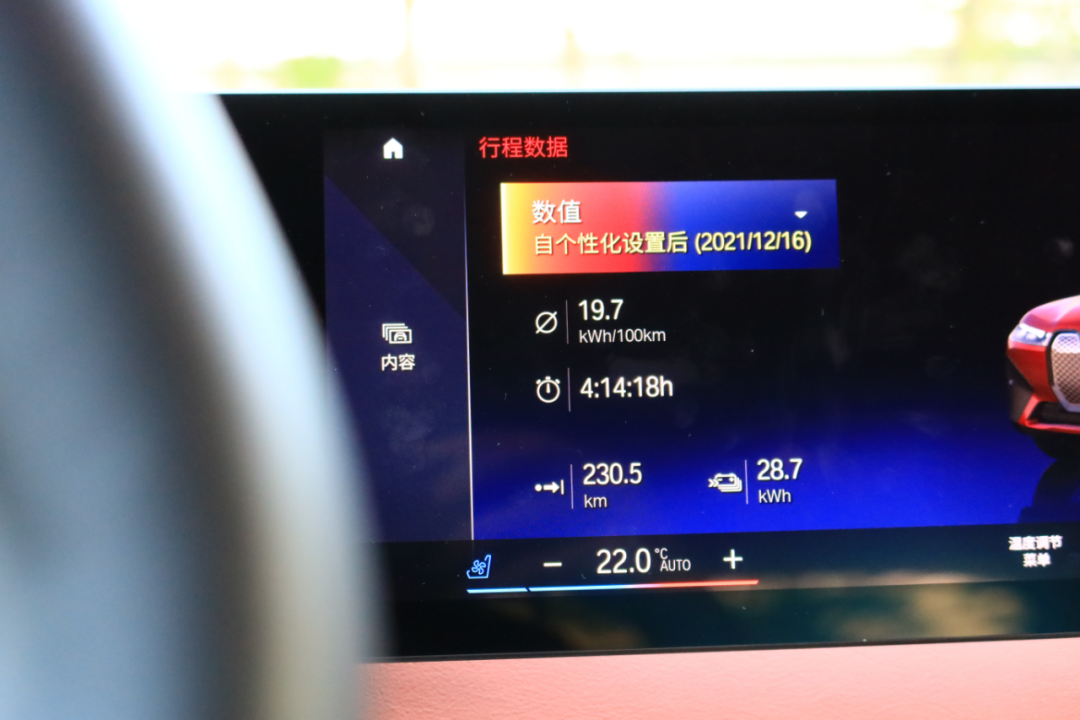
Half the price for the same frame value
At the moment the car door is opened, the large exposed carbon fiber is not just for you to show off. The 2014 BMW i3’s carbon fiber composite monocoque body was ultimately proven to be a beautiful mistake. Today’s iX is a show of restraint: the visible carbon fiber material is actually only on the outside of the door frames (and in the buried top longitudinal beam, not visible on the inside), while the inside of the door frames are made of more common high-strength steel body.
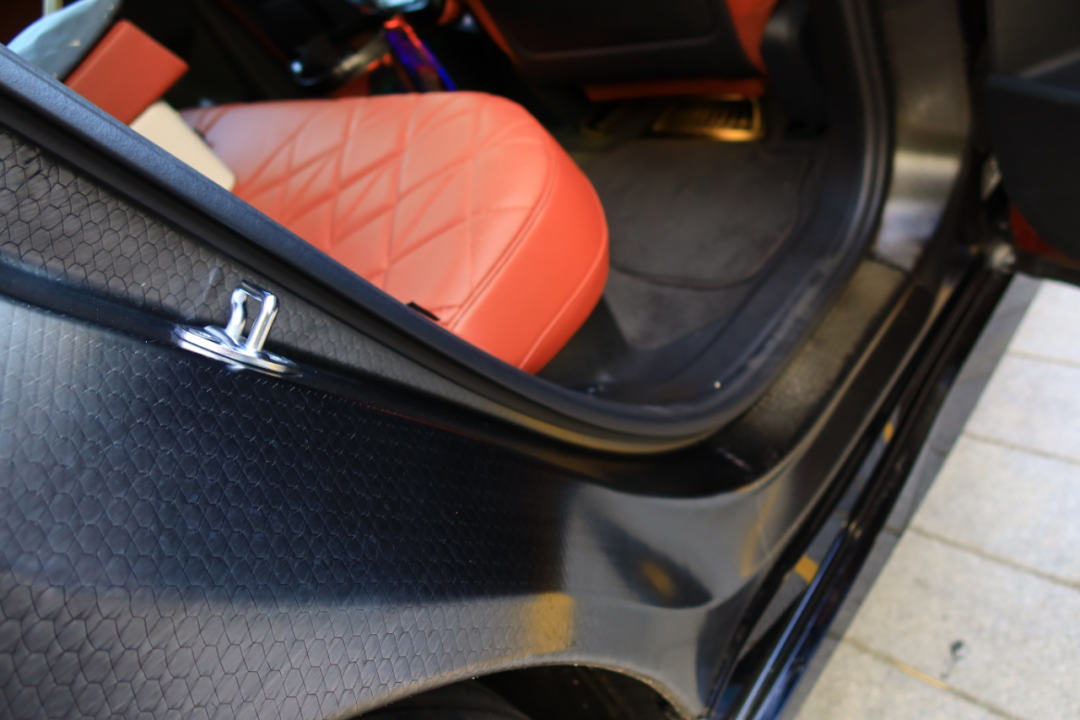
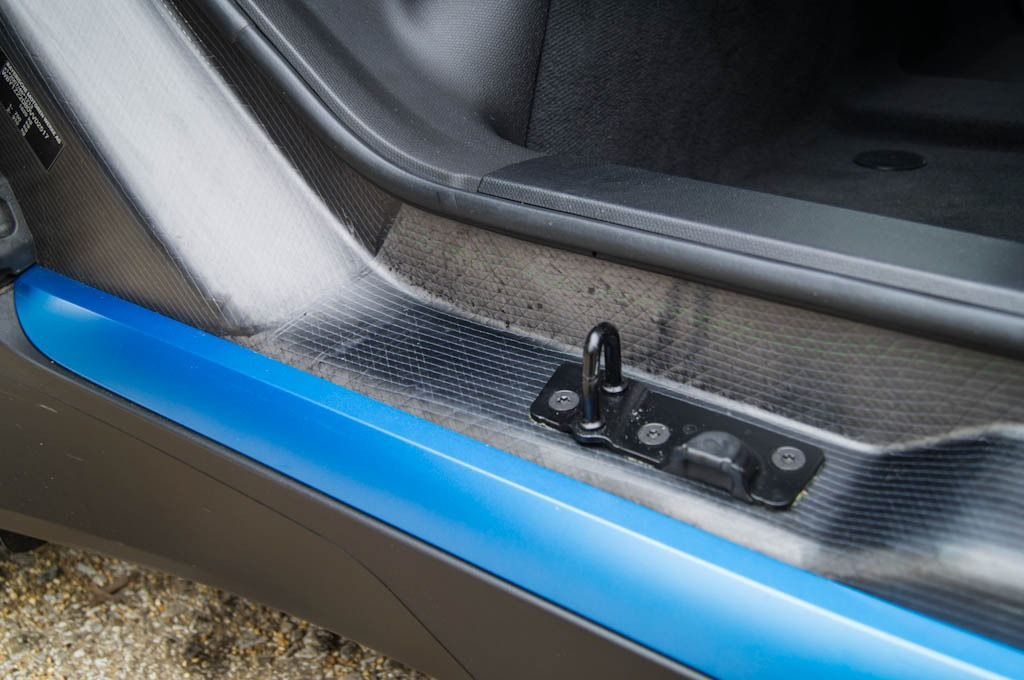
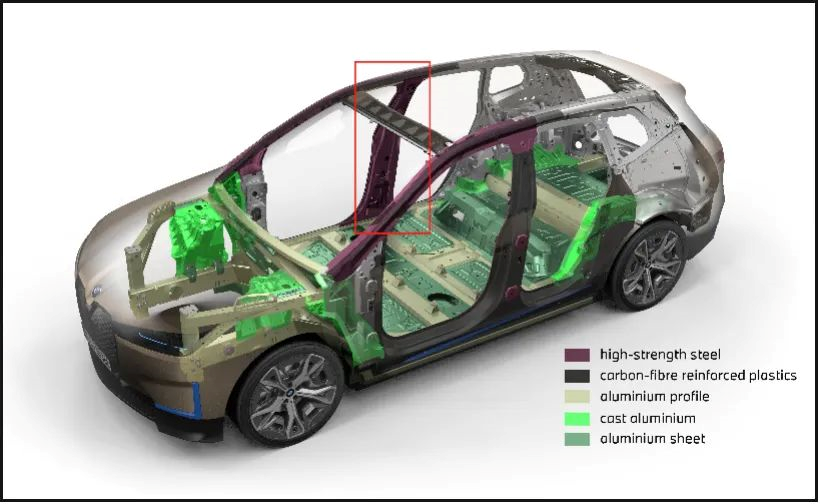
The iX is the spiritual successor to the i3, but corrects the i3’s excessive fixation on body material and incorporates today’s more “correct” design approach: one-piece cast aluminum pieces. Yes, it’s the same thing that Tesla is doing with the Model Y (“Your Model Y is Being Stamped Out”).
The bright green part in the figure above represents the aluminum casting material. Although the iX does not cast the entire lower rear body like the Model Y, the complex rear wheel arch longitudinal beams are already cast in aluminum, with only a slight difference from the Model Y’s approach. The entire lower half of the body is made of aluminum using other processes (the gray-green and gray-yellow in the figure).
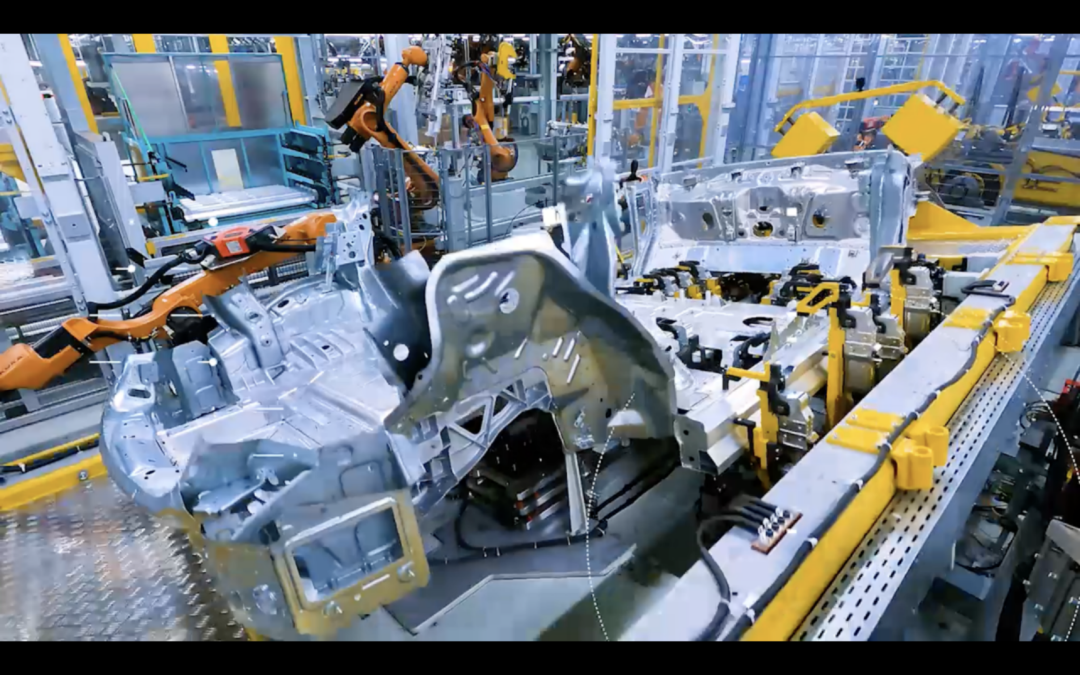 In the front and rear windshield beams, BMW has also used composite materials, which reduces the top weight by 5 kg (source: Automotive Circle), and at the same time, reduces the center of gravity. The A/B pillars and door frames are made of high-strength steel, and the outer side is reinforced with carbon fiber material (visible when the door is opened). While ensuring the strength of the passenger compartment, the thick carbon fiber also makes a significant contribution to the body stiffness.
In the front and rear windshield beams, BMW has also used composite materials, which reduces the top weight by 5 kg (source: Automotive Circle), and at the same time, reduces the center of gravity. The A/B pillars and door frames are made of high-strength steel, and the outer side is reinforced with carbon fiber material (visible when the door is opened). While ensuring the strength of the passenger compartment, the thick carbon fiber also makes a significant contribution to the body stiffness.
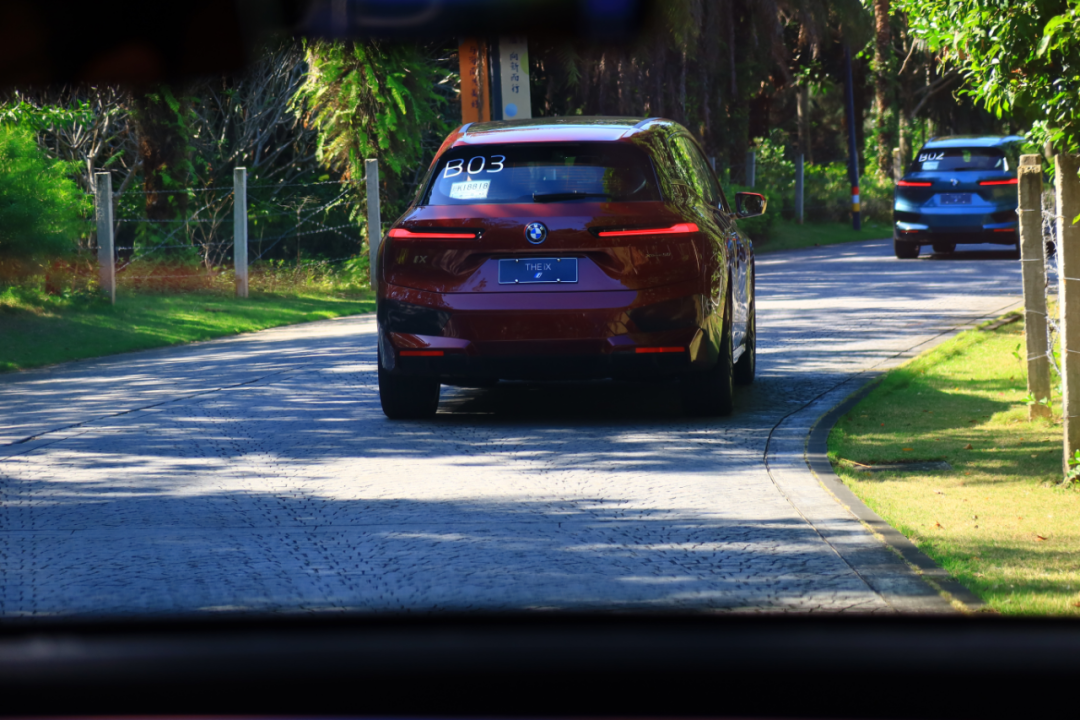
I still don’t know the specific numerical value of iX’s body torsional stiffness, but its good NVH performance on rough road surfaces shown in the picture above and its quietness at high speeds leave a deep impression. Similar to steering, BMW has a limit to the comfort bias of the iX. The suspension system is not soft to the bottom, and small undulations during high-speed driving will not be filtered out. However, the common continuous micro-vibrations on fine brick roads at medium and low speeds are completely eliminated by the iX.
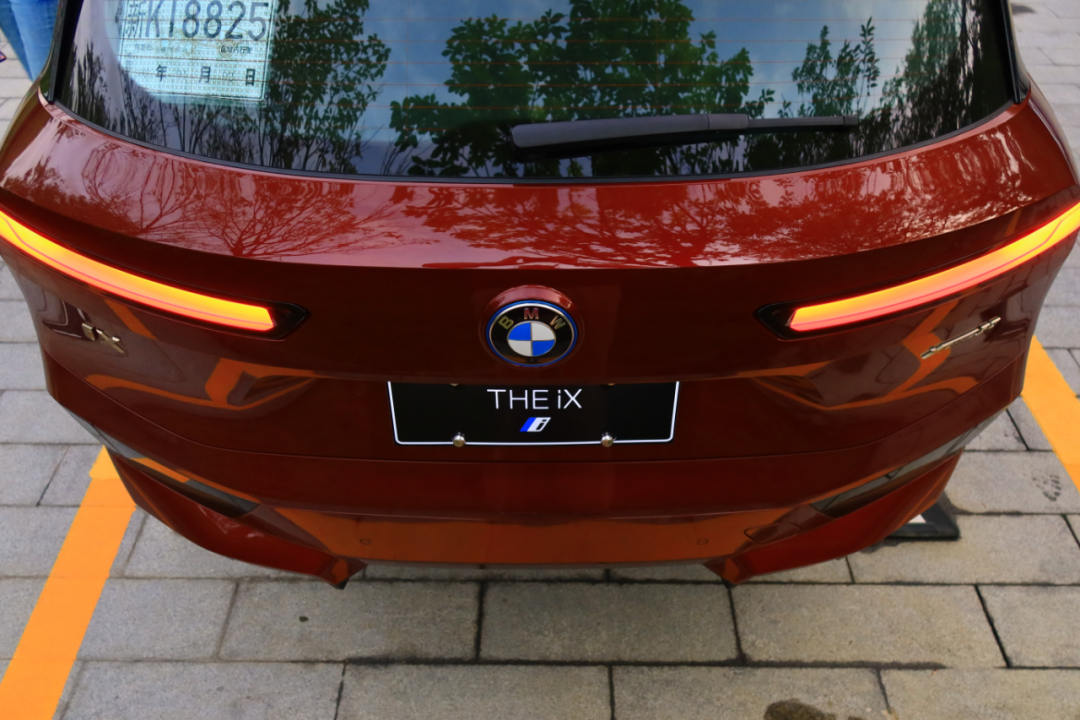
The iX is BMW’s “complete summary” of the BMW i series for the previous seven years and a “preview” for the upcoming new pure electric platform. In the future, we will also see a pure electric “new i3” based on the 3 Series, and a new pure electric flagship sedan (i7, or the same platform as the iX). By 2025, BMW will usher in a purely electric platform New Class. This name comes from the BMW mid-size car New Class in 1962, before which was the post-war “bubble car” Isetta era, and after which we now know the 3, 5, and 7 Series.
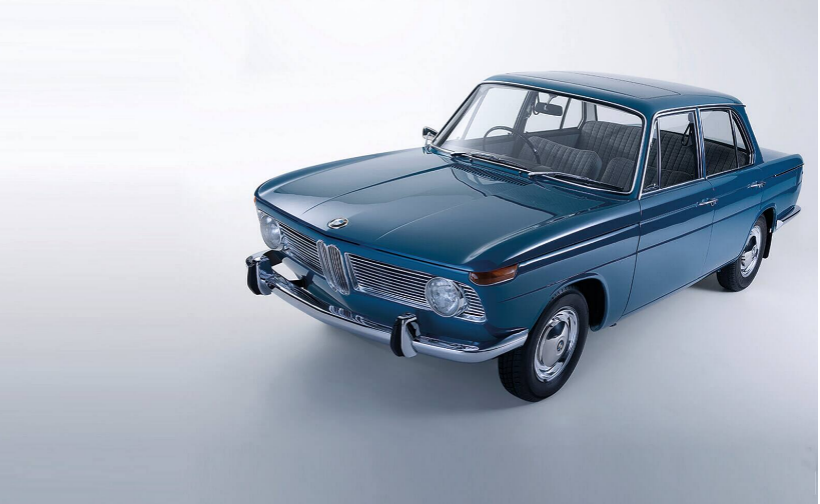
Today’s iX will also play such a role. The current iX platform is already an electric configuration, but it is not enough to meet the needs of low-priced vehicles at the moment. The combination of more than half of the car body aluminum + a large amount of carbon fiber + a new type of composite material can be borne by the 800,000 yuan iX, but it does not mean that the 3 Series level can bear it. Therefore, BMW still needs the New Class platform, which is suitable for mass production, and it will undoubtedly learn from the iX.
iX has also made some improvements. For example, its driving assistance maintains BMW’s usual low-key but high-level performance, but the following distance can only be adjusted through the menu on the large screen and lacks consideration. The speed of iD8 car machine also has some room for improvement.The advantages of the iX lie in its top-notch driving performance among electric cars, proper handling feedback and NVH balance, innovative interior space arrangement, as well as a series of surprising details, such as self-healing front grille and up to 30 hidden speakers.
This article is a translation by ChatGPT of a Chinese report from 42HOW. If you have any questions about it, please email bd@42how.com.
